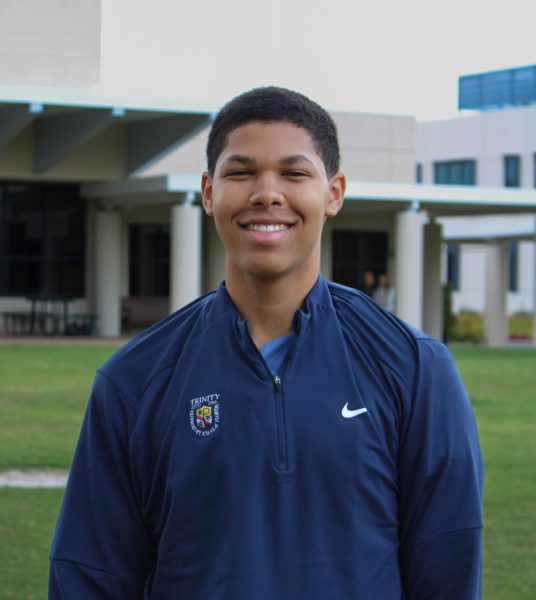Ideally, a college preparatory school should make decisions that prioritize student learning and prepare students for their futures. The dress code should not be the exception to this trend. However, the most recent change to the dress code prohibiting men from long hairstyles and earrings seems to have little in line with either of these goals.
Across the decades, the formality of the dress code has eased up. In past years, male students had to wear ties, and then at other points were required to wear pants during colder months. These requirements have since been done away with. While Trinity has gone through decades of dress-code iterations, a common thread has been a gendered dress code.
“Having a clear delineation between males and females in the dress code … (is something) that administrative leaders of the school thought (was) appropriate,” Associate Head of School Dennis Herron said. “So we have to operate within what that is in terms of how males dress and how females dress.”
This delineation does not exist in college, though. As a college preparatory school, there is an obvious emphasis on mimicking the college environment, as evidenced by offering college-level courses. There is no reason Trinity should mirror most aspects of colleges except the dress code. Administrators acknowledge that an objective of the dress code is to establish a more professional setting.
“(The dress code should) create somewhat of a professional environment for students,” Herron said. “So when you come to school, there are behavioral expectations. There are cultural expectations on campus.”
For Trinity to most effectively cultivate a professional setting, it would make sense that they match the trajectory of workplaces. Across the board, many dress codes have become less gendered. According to HR Consultant Brightmine, only 4.3% of workplaces contractually enforce dress codes. Among workplaces that have an expectation of dress, more than a quarter of them have informal expectations that are frequently less gendered.
For instance, Google has no official dress code for its employees, and male nurses at Advent Health are permitted to wear earrings. Many students are looking to move forward into the tech or health industry, so the best way to prepare them would be to emulate those environments.
Additionally, reinforcing ideas that only women can wear earrings or only women can wear long hairstyles directly undermines student comfort. Accessories and hairstyles are directly related to how people want to express themselves and, more importantly, how they want to be perceived by the world.
“I’m really self-conscious about my hair for some reason, and when it was long, I felt like it was really good,” seventh grader Aviad Johnson said. “So when I had to cut it for the first two weeks, it was a really weird experience for me because I was used to walking around with a completely different hairstyle.”
Undermining student comfort is detrimental to learning. According to a report published by the Department of Education, student comfort is directly related to student self-efficacy and completion of coursework. Stifling student comfort has the direct impact of stifling their academic achievement.
Rather than forcing students to follow rules that they will likely never have to encounter in a career setting, Trinity should focus on building habits that they will need to use.
Long hairstyles and earrings can be professional, so rather than avoiding them entirely, Trinity should fulfill its role as a preparatory school and help students understand how to wear long hairstyles and earrings in professional settings.
“I think that if you’re going to have long hair, then you should train (students) on how to maintain long hair,” Brominguez said. “Messy long hair and well-done long hair are two very different things. One can still hold up in a boardroom fine.”
The lead editorial expresses the opinion of the Trinity Voice editorial staff. Please send comments to [email protected].












